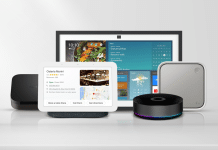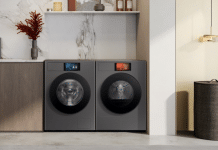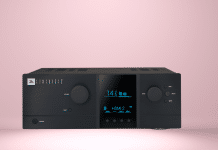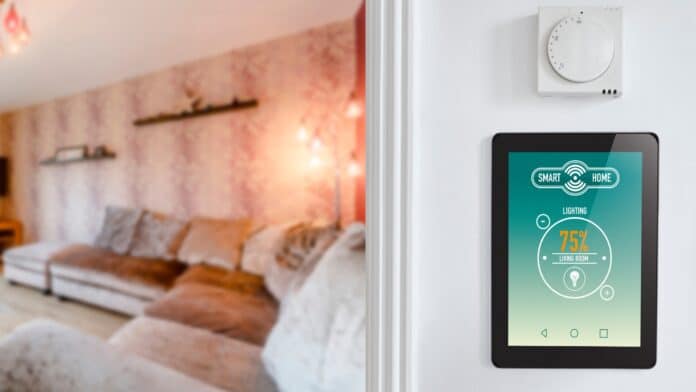
Smart Lighting Control is a technology that allows you to easily control and automate the lighting in your home using a smartphone App, voice commands, or physical switches and dimmers. With smart lighting control, you can turn lights On and Off, dim them to the perfect level, and even schedule them to turn On and Off at specific times of the day.
But with so many different smart lighting control options available, it can be overwhelming to choose the right solution for your home. In this post, we’ll take a look at the different types of smart lighting control systems available, including wireless and wired options. We’ll also discuss the benefits of smart lighting control and provide tips to choose the right solution for your home. Whether you’re looking to upgrade your current lighting setup or are building a new home and want to incorporate smart lighting from the start, this blog post will help you make an informed decision.
Wireless vs. Wired Smart Lighting Control Systems
Firstly, you have to decide whether to opt for a wireless or wired solution. Both have their own advantage and disadvantages, so it’s important to consider which one is best for your home.
Wireless smart lighting control systems use a combination of Bluetooth, Wi-Fi, and sometimes even cellular connections to communicate with the lights and control them remotely. These systems are typically easier to install, as they don’t require any complicated wiring. However, they may not be as reliable as wired systems, as they can be disrupted by interference from other wireless devices or physical obstacles.
Wired smart lighting control systems, on the other hand, use physical cables to connect the lights and control devices. These systems tend to be more reliable, as there is no risk of interference. However, they can be more difficult to install, as they require running cables through walls and ceilings.
Cost is a major factor to consider when deciding between wireless and wired smart lighting control systems. In general, wired systems tend to be more expensive upfront, due to the cost of materials and labour for installation. However, they may be more cost-effective in the long run, as they tend to be more reliable and require less maintenance. Wireless systems, on the other hand, are generally cheaper upfront but may require more maintenance and updates over the years.
Ultimately, the best choice for you will depend on your specific needs and preferences. If you’re looking for a quick and easy installation, a wireless system might be the way to go. However, if you want a more reliable and long-lasting solution, a wired system might be a better fit.

The Benefits of Smart Lighting Control
Smart lighting control offers a number of benefits for homeowners. Here are a few key advantages to consider:
- Energy Efficiency: Smart lighting control allows you to turn lights Off when they’re not needed, which can help you save on energy costs. You can also set schedules to turn lights off automatically when you’re not home or dim them when they’re not in use.
- Convenience: With smart lighting control, you can easily turn lights On and Off or dim them using a smartphone App, voice commands, or physical switches and dimmers. This can be especially convenient when you’re not home, as you can control your lights remotely.
- Security: Smart lighting control can also help improve the security of your home. You can set lights to turn On and Off at specific times to give the impression that someone is home, even when you’re away. You can also turn lights on and off remotely if you need to check on your home while you’re away.
- Customization: Smart lighting control systems often offer a wide range of customization options, allowing you to set different lighting levels and colors for different rooms or activities. This can help create the perfect ambiance for any occasion.
Overall, smart lighting control can make your home more comfortable, energy-efficient, and secure. It’s a smart investment that can pay off in the long run.
Choosing the Right Solution for Your Home
With so many different smart lighting control options available, it can be overwhelming to choose the right solution for your home. Here are a few tips to help you make the best decision:
- Consider the size and layout of your home: The size and layout of your home will play a significant role in determining which smart lighting control solution is best for you. If you have a large home with multiple rooms and floors, you may want to consider a wired system, as it can be more reliable and cover a larger area. If you have a smaller home or apartment, a wireless system might be a better fit.
- Determine your budget: Smart lighting control systems can vary widely in price, from a few hundred rupees for a basic wireless system to lakhs of rupees for a more advanced wired system. Determine your budget and look for a solution that fits your needs and price range.
- Consider your personal preferences: Think about your personal preferences when it comes to controlling your lights. Do you want to use a smartphone App, voice commands, or physical switches and dimmers? Make sure to choose a solution that aligns with your preferences.
- Read reviews: Before deciding, be sure to read reviews from other users to get a sense of the Pros and Cons of different smart lighting control systems. Look for reviews from users with similar needs and preferences as you to get a better idea of which solution might be the best fit for you.
- Look for compatibility with your existing lighting: If you already have lights installed in your home, make sure to choose a smart lighting control system that is compatible with them. Many systems are compatible with a wide range of lighting types, but it’s still important to double-check before making a purchase.
- Consider the type of control devices you want: Smart lighting control systems typically come with a range of control devices, such as switches, dimmers, and remote controls. Consider which type of control device is best for your needs and preferences. For example, if you want to be able to control your lights from anywhere in your home, a remote control might be a good choice. If you prefer to control your lights using your voice, look for a system that is compatible with voice assistants such as Amazon Alexa or Google Assistant.
- Think about integration with other smart home devices: If you have other smart home devices, such as a thermostat or security cameras, consider a smart lighting control system that can be easily integrated with them. This can allow you to create automation scenarios that can make your home even more convenient and energy-efficient.
By considering these tips, you can choose a smart lighting control solution that fits your needs and preferences perfectly.
Combining Wired and Wireless Smart Lighting Control Systems
One option to consider when choosing a smart lighting control solution is to combine wired and wireless systems. This can allow you to take advantage of the benefits of both types of systems and create the perfect solution for your home.
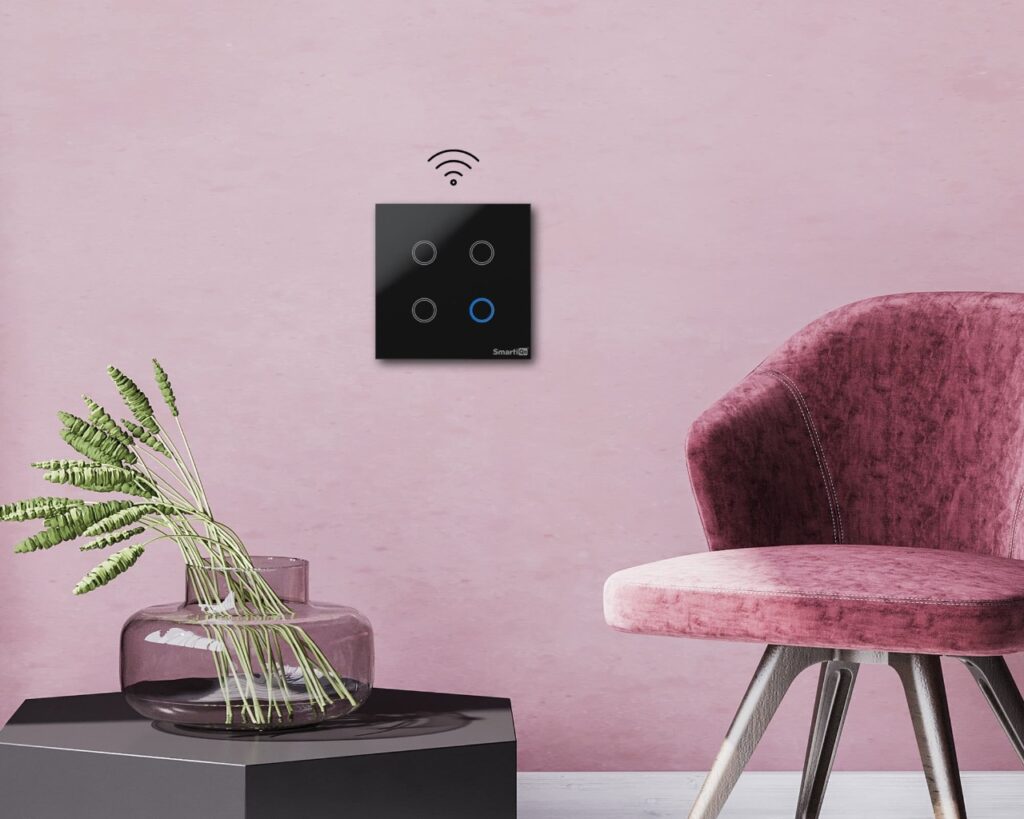
For example, you might use a wired system for the main lighting in your homes such as recessed lights and chandeliers, and a wireless system for accent lighting, such as floor lamps and table lamps. This can allow you to enjoy the reliability and coverage of a wired system while still being able to easily control smaller lighting fixtures with a wireless system.
Another option is to use a hybrid system, which combines both wired and wireless technologies. Hybrid systems typically use a wired connection for the main lighting in your home and a wireless connection for smaller lighting fixtures and control devices. This can provide the best of both worlds, offering the convenience and flexibility of a wireless system with the reliability and coverage of a wired system.
By combining wired and wireless systems, you can create a smart lighting control solution that meets your specific needs and preferences. Be sure to carefully consider the size and layout of your home, your budget, and your personal preferences when deciding which type of system to use.
“In this era of modernization, where the Indian networking and internet infrastructure has leapfrogged from where it used to be, the support required by wireless devices has become much more stable,” said Raj Shah, Director at Smartiqo. “Smart living, once a dream for most because of extensive and expensive wired systems, is today a reality for most. When talking of wireless smart home devices of any kind, it has more flexibility from a customer standpoint in terms of installation, integration and operation when done with the right mesh routers.”
Controlling Your Smart Lighting
Once you have your smart lighting control system installed, it’s time to start using it! There are several ways you can control your smart lighting, depending on your system and personal preferences. Here are a few options to consider:
- Smartphone App: Most smart lighting control systems come with a smartphone App that allows you to control your lights from anywhere. Using the App, you can turn lights on and off, dim them, and set schedules for when lights should turn on and off automatically. These apps even allow you to control multiple lighting fixtures at once, or create lighting “scenes” that set multiple fixtures to specific lighting levels and colors.
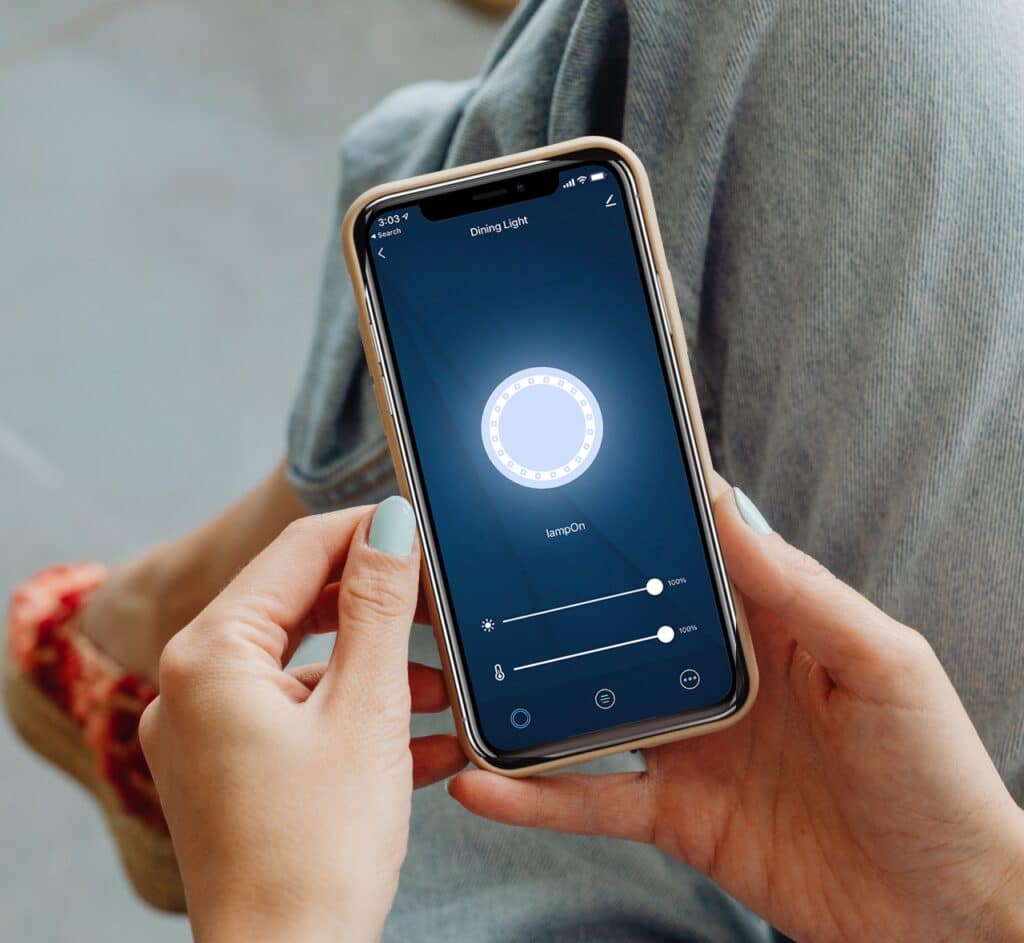
- Voice commands: If you have a smart lighting control system that is compatible with voice assistants such as Amazon Alexa or Google Assistant, you can use voice commands to control your lights. Simply say a command such as “Turn on the kitchen lights” or “Dim the bedroom lights” to control your lighting. You can also use voice commands to turn lights on and off, set lighting levels, and create lighting scenes.
- Physical switches and dimmers: Some smart lighting control systems come with physical switches and dimmers that allow you to control your lights directly. These can be especially convenient if you prefer a more traditional method of control, or if you have a system that doesn’t offer voice control or a smartphone app.
- Remote control: Some smart lighting control systems come with a dedicated remote control that allows you to control your lights from a distance. This can be especially convenient if you have a large home and don’t want to walk to every room to turn lights on and off.
- Smart home hub: If you have a smart home hub such as a SmartThings or Wink hub, you can use it to control your smart lighting. Many smart lighting control systems are compatible with these hubs, allowing you to control your lights using the hub’s smartphone app or voice commands.
By using a combination of these control methods, you can enjoy the convenience and flexibility of smart lighting control in your home.
Matter Standard 1.0: A Major Milestone for the Smart Lighting Control Industry
In 2021, the Matter standard 1.0 was launched, marking a major milestone in the smart home industry. Matter is a new open standard for smart home devices that was developed by a consortium of companies, including Amazon, Google, and Apple. The goal of Matter is to create a seamless and interoperable smart home experience by establishing a common language that all smart devices can use to communicate with each other.
One of the key benefits of Matter for the smart lighting control industry is that it allows different brands and products to work together more seamlessly. In the past, it was often difficult to get different smart lighting control products from different brands to work together, as they used different communication protocols and often required separate apps and hubs. With Matter, these barriers are being broken down, making it easier for consumers to create a truly connected and automated home.
Several major brands in the smart lighting control space have announced their support for the Matter standard. This means that in the future, it will be easier for these brands’ products to work together and be controlled using a single app or voice assistant.
Overall, the launch of Matter standard 1.0 is a promising development for the smart lighting control industry, as it will make it easier for consumers to create a seamless and interoperable smart home experience.
In conclusion, a smart lighting control system can be a valuable addition to any home. It offers energy efficiency, convenience, security, and customization, making it a smart investment that can pay off in the long run. When choosing a smart lighting control system, it’s important to consider factors such as the size and layout of your home, your budget, and your personal preferences. You can choose between a wired or wireless system, or even combine the two to create the perfect solution for your needs.
There are many different smart lighting control brands available, ranging from budget-friendly options to more expensive, high-end systems. Ultimately, the best brand for you will depend on your specific needs and preferences.





